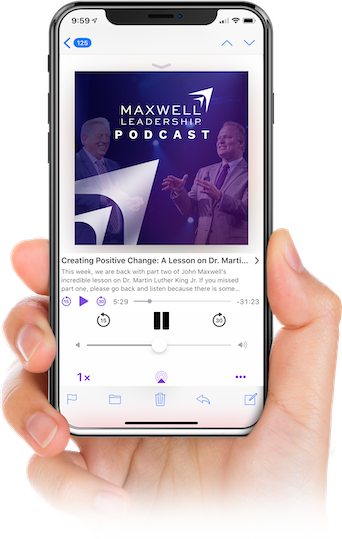7 Steps to Get Your Point Across

In 1990, Elizabeth Newton performed her PhD project at Stanford, called “Tappers and Listeners.” Chip and Dan Heath mention it in their book Made to Stick. It was a simple exercise where a group of individuals was divided into two teams. The first team was called “tappers,” and their job was to choose a song from a list of twenty-five well-known songs (such as “Happy Birthday” or “The Star-Spangled Banner”) and tap out the song on a table with their fingers. The second team was the listeners. Their job was to simply guess the song by the rhythm being tapped. Sound simple?
In reality, the listener’s job was quite difficult. Of the 120 songs that were tapped out in Newton’s experiment, only 3 were guessed correctly. That’s 2.5%. Not a very good score. Now, here’s what made the experiment newsworthy. Before they began, each tapper was asked to predict the odds of their listeners getting the song right. The tappers predicted their odds were 50%. They thought they would get their message across one in every two attempts. Interestingly, the tappers only got their message across one out of forty attempts. Why? It’s simple. When tappers tap a song out, they’re hearing the song in their head. Most listeners didn’t hear the song at all, even though they heard the beat. These tappers were stunned at how hard the listeners were working to guess the song. Isn’t it obvious?
Unfortunately, this little exercise is repeated many times in workplaces across our nation. The one speaking has a clear message in their head, but somewhere between their lips and their listeners’ ears, the message gets lost in translation. The speaker assumes the listeners will “get it.” Unfortunately, listeners’ minds are in so many different places before hearing you speak—their biases may cause them to misunderstand the message you’re sending.
WHY IS COMMUNICATION SO CHALLENGING TODAY?
The truth of the matter is, communication is a huge issue for employers. They list it as the number-one need in employees today—clear, complete, empathetic communication. So why is this basic need so challenging to pull off?
- Most of us grew up in a world of screens, where messaging is different.
- Genuine communication requires hard work, and we can get lazy.
- Half of communication is listening, and many of us don’t do that well.
- Often workplaces are filled with team members from multiple generations.
- We tend to assume our listener is on the same page.
George Bernard Shaw once said, “The single biggest problem in communication is the illusion that it has taken place.” Authentic communication usually requires me to step into the shoes of the one I speak with and imagine what they’ll need to understand my message. What words will best be comprehended? What voice tone should I use? Do I need to give an example of my point? Should I ask a question? How can I listen well and earn my right to speak? What method for communicating should I use: email, text, call, social media, or face-to-face conversation? These are all legitimate questions to get your message across. Psychologist Rollo May said, “Communication leads to community, that is, to understanding, intimacy and mutual valuing.” Although it’s work, good communication is worth the effort.
So, what can we do?
How to Make Your Point
Years ago, Milo Frank suggested some steps that lead to great communication in his book, How to Get Your Point Across in 30 Seconds or Less. Here is a summary of his big ideas:
1. HAVE AN OBJECTIVE.
Know exactly what you want to say and what your goal is once you’re finished.
2. KNOW YOUR LISTENER.
Work to understand and empathize with your listeners.
3. CHOOSE THE BEST APPROACH.
Based on your objective and listener, decide how to approach the conversation.
4. USE A “HOOK.”
Choose a memorable handle or analogy for your listener to engage in and grasp.
5. DEVELOP THE SUBJECT.
If your goal is big, you may have to include research or supporting information.
6. PAINT A PICTURE.
People love visuals and metaphors. Ensure your message leaves a picture in them.
7. ASK FOR WHAT YOU WANT.
Don’t settle for merely informing them. Decide what action you’d like them to take.
Doug Conant was hired as the new CEO of Campbell Soup Company in 2001. The business was in serious trouble at the time since the food industry was consolidating. Doug was brought in to turn it all around. And that’s exactly what he did. The challenges he faced, however, were gigantic. At the time, the culture at Campbell Soup Company was toxic. Most of the employees were disengaged, with no passion for their work. What’s more, leaders had been hired from various companies like Pepsi, Procter and Gamble and General Mills, each pushing for their own strategies and ideas. On top of this, there were four generations working there. People weren’t connecting. Communication was at an all-time low.
So, Doug started to rebuild.
He began to create a culture of good communication. He set an example of noticing the good work people did and thanking them in front of others. He wrote 10-20 handwritten notes each day to people on staff, just to let them know he’d seen their good work. (Doug wrote 30,000 notes in ten years). He taught his executive leaders to view all the buzz, phone calls, emails and people stopping by not as interruptions—but as opportunities to connect better. In short, Doug got people to connect both online and offline. What’s more, he launched a cohort of promising leaders to meet with and mentor, knowing they were the future of Campbell’s. He got them to communicate well…creating an energized culture. This was the secret to Campbell’s huge turnaround.
Are you looking to become a better communicator this year?
Check out my Communication Cohort, a monthly mentoring group for those who want to speak and write better. Visit TimElmore.com. Click the button at the top of the home page: Communication Cohort.
More Articles

If Generation Z Had a Perfect Working Environment

Living like Jesus: 3 Reasons Christians Should be Leading on the High Road









Be the first to comment on "7 Steps to Get Your Point Across"